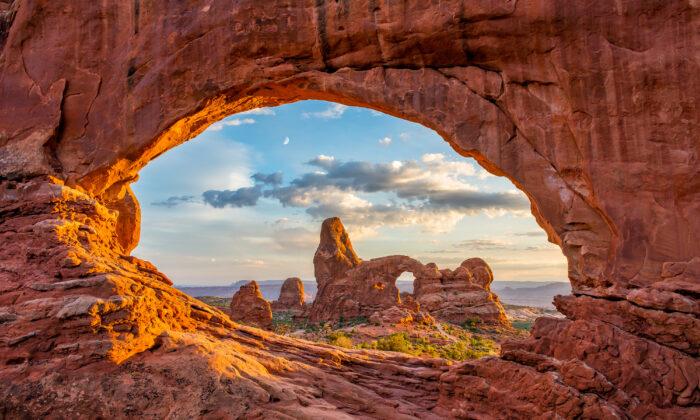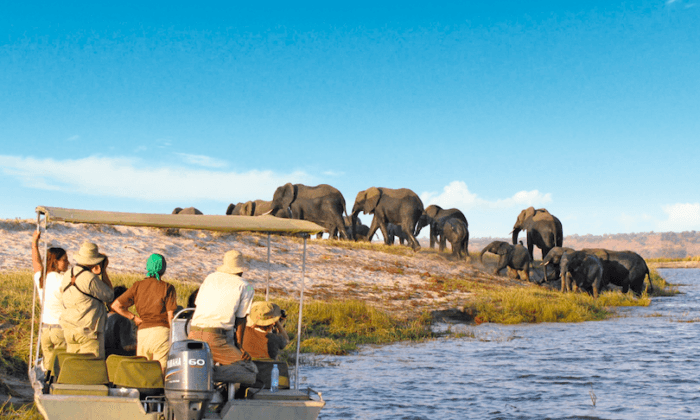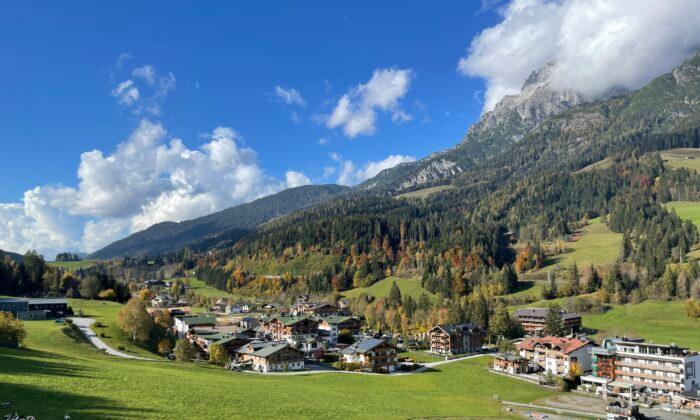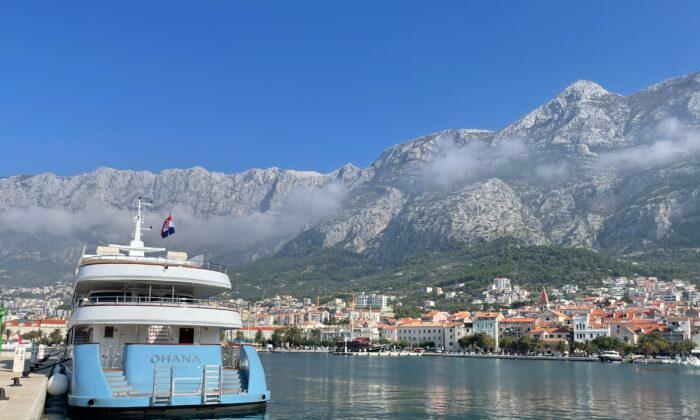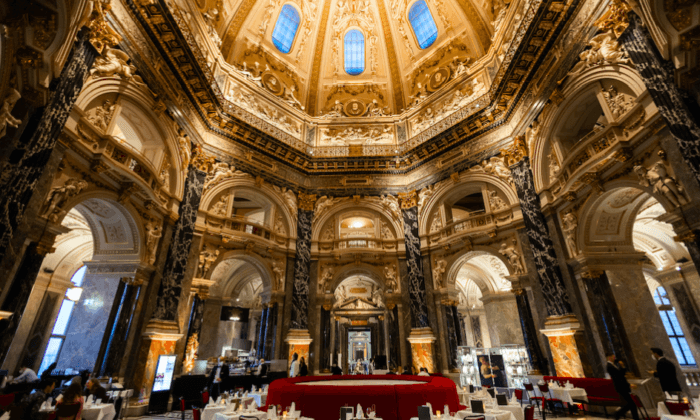The rugged desert landscape of southeastern Utah is like no other place on earth. No wonder it has been the location for hundreds of films over the past 70 years, from John Wayne classics to “Indiana Jones and the Last Crusade” to “Thelma and Louise,” and more.
The best base to explore this unique part of the United States is the small town of Moab, population 5,300. Moab has long been a favorite with adventure seekers who come to drive four-wheel-drive vehicles up challenging slickrock, climb rock walls, kayak fast-moving rivers, or disappear for days on a hike into the backcountry.
But you don’t have to be into extreme adventure to have a wonderful time in Moab. The region is home to two of America’s top national parks—Arches National Park and Canyonlands National Park. You can spend a week exploring the parks or even just a day, returning for an excellent steak dinner and a craft cocktail at one of Moab’s many restaurants. The town also has art galleries, unique shops, and a variety of accommodations that range from basic to plush.
Mother Nature is the main attraction in the region, though. After all, more than 87 percent of Grand County, Utah, is public land—and that offers plenty of space to explore while practicing social distance.
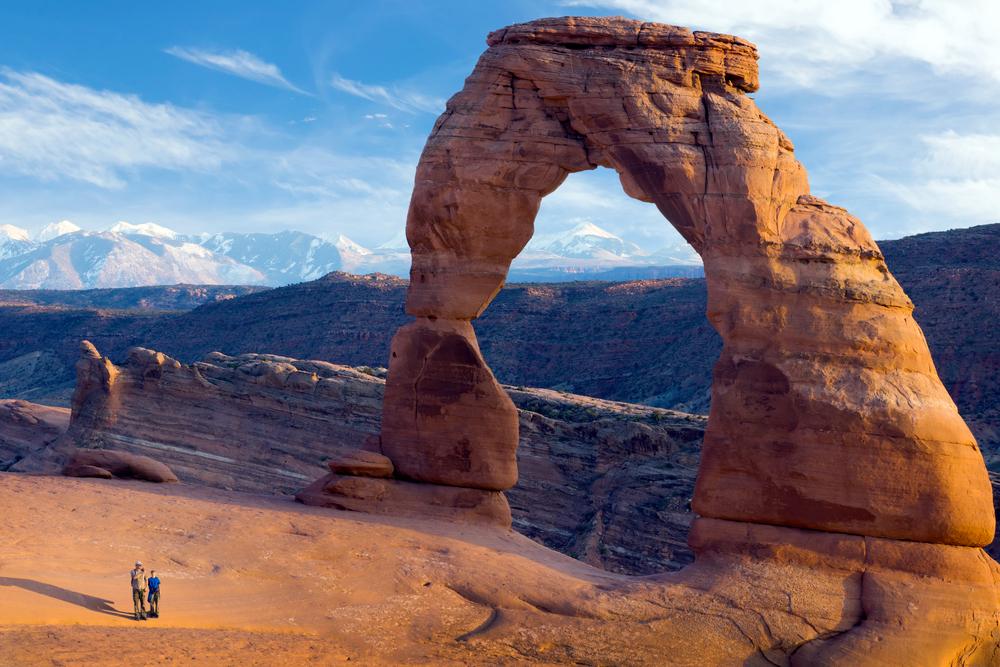
Planning Your Visit
To make the most of your time in the region, stop first at the Moab Information Center, which has a wealth of information on the parks, hiking, and other recreational opportunities in the area. Take a few minutes to watch the film “Welcome to Moab” for a good overview of the area. Masks are currently required in Moab—in public areas, both indoors and outdoors—where consistent social distancing of at least six feet isn’t possible. Free masks are available at the Moab Information Center.Happily, there is plenty of space to explore the great outdoors. I recommend spending at least three days in Moab. This will give you plenty of time to explore the parks, as well as the town of Moab.
If you’re short on time and you visit in the summer, when daylight hours are long, you can squeeze in visits to both parks in one day. Be sure to check the national parks website before you go. Most parts of the parks are currently open, but there are some closures due to COVID-19.
History of the Region
People have been drawn to this region for thousands of years. Hunter-gatherers traveled to the area more than 10,000 years ago. They began to settle down about 2,000 years ago, cultivating plants and settling the Four Corners region. Although few of their dwellings have been found in Arches National Park, they lived in dwellings that can still be seen in Mesa Verde National Park, some 150 miles away.The first Europeans to reach the area were Spaniards, and other traders and explorers soon followed. The town of Moab was settled in the 1880s. One young inhabitant was Loren “Bish” Taylor, who took over the Moab newspaper in 1911 at just 18 years old.
Taylor fell in love with Moab’s landscape and glowingly described the beauty of Red Rock Country in his paper. Taylor often went out exploring with John “Doc” Williams, Moab’s first doctor. “Doc” was an early advocate for the creation of a national park.
A prospector named Alexander Ringhoffer shared their passion. He invited Rio Grande Western Railroad executives to visit, hoping to publicize the effort. They were impressed and got behind the idea of a national park.
Arches National Park
Eventually, the government sent research teams to view the area. In 1929, President Herbert Hoover signed presidential proclamation No. 1875 to preserve land in two areas: 1,920 acres in the Windows and 2,600 acres in the Devils Garden for Arches National Monument.Today, Arches is a favorite with Americans, as well as international visitors. Located just five miles from Moab, Arches is open 24 hours a day, and the entrance fee is $30 per car. (You can come and go with the pass for seven days.)
The park is famous for its natural sandstone arches and has more than 2,000 of them within the park’s 76,518 acres. Other stunning geological formations include soaring pinnacles, giant balanced rocks, and sandstone fins. It’s no wonder that the park draws photographers from around the globe. There’s a stunning vista in any direction you point a camera.
Some of the park’s top attractions are Delicate Arch, which is 46 feet high and 32 feet wide, and Balanced Rock, a spectacular landform that is 128 feet high, with a massive balanced rock about 55 feet above its base.
Many of the park’s top attractions are accessible by car. Numerous trails, such as the Park Avenue Trail and trails in the Windows section of the park, are suitable for kids and adults and easily accessible from the paved scenic drive.
If you have a full day, try one of the longer hikes in the park, such as the trails to Delicate Arch, Double O Arch, Tower Arch, and Landscape Arch.
Camping is available by reservation at Devils Garden Campground and is open year-round. While there are no showers, facilities include potable water, picnic tables, grills, and restrooms.
Be sure to note that there are no food facilities in the park, so pick up a picnic lunch or food for camping in Moab before you come.
Canyonlands National Park
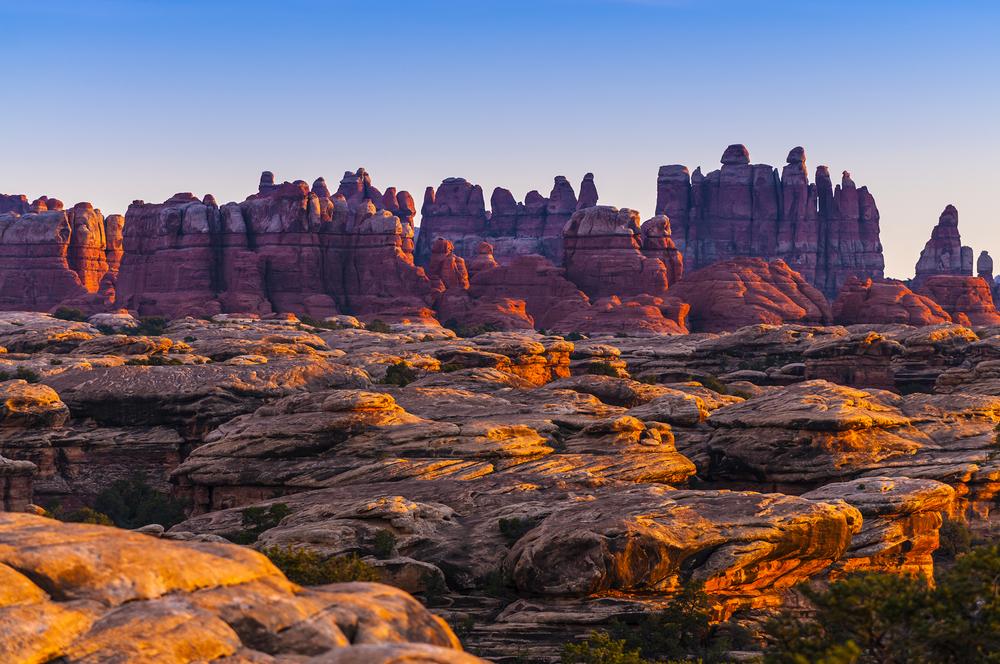
Just 10 miles from Arches is Canyonlands, the largest national park in Utah. Canyonlands has dramatic canyons and buttes that were carved by the Colorado River and its tributaries. The park has four distinct districts: The Needles, The Maze, Island in the Sky, and the rivers.
The story of Canyonlands National Park is a bit unusual. In the 1950s, the United States was on a hunt for uranium, a critical material needed in atomic bombs. It was believed that the canyons of southeast Utah contained uranium, if only it could be found.
The Atomic Energy Commission (AEC) recruited an army of prospectors from around the country to search for uranium, offering them potential riches while they served the interests of national security.
To assist the miners in their search, the AEC built more than 1,000 miles of road through the rugged canyon country of southeast Utah. Building the roads was hard physical labor, often done by miners working with bulldozers, picks, and shovels.
Yes, uranium was eventually found in southeast Utah, but the roads opened the remote region to many others. Eventually, Bates Wilson, a superintendent at Arches National Park and other National Park Service employees began working to establish a new national park. Dubbed the “Father of Canyonlands,“ Wilson worked tirelessly to advocate for the park. In 1964, Congress established Canyonlands National Park.
Canyonlands has more than 80 natural arches, but its most famous attraction is Mesa Arch. Many start their visit to Canyonlands by heading to the Island in the Sky district, which is about 30 miles from Moab. The drive is stunning, and there are numerous pullouts that will allow you to stop and soak in the view. Island in the Sky is just like it sounds—it sits atop a 1,500-foot mesa, high in the sky.
Hiking trails are plentiful, and there are four-wheel-drive roads that crisscross the backcountry. If you want to tour the area by car, follow the 20 miles of paved roads. From atop these lofty viewpoints, you can see more than 100 miles on a clear day. Take a picnic and explore at leisure. Such grand views are meant to be savored.
Tips on Visiting the Parks
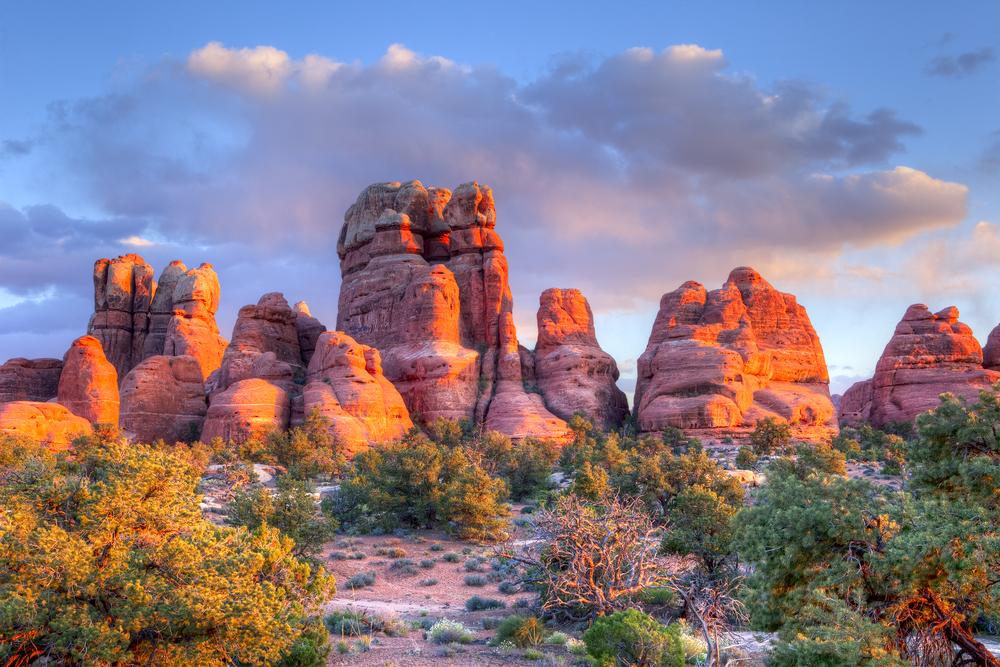
You’ll need a car to reach and get around in Moab. The nearest major airport is Salt Lake City, which is about a four-hour drive from Moab. Grand Junction, Colorado, located 110 miles from Moab, has a smaller airport, but provides the closest option for most airlines.
Spring and fall are the best times to visit the parks, with cooler temperatures and fewer visitors. In summer, temperatures can reach more than 100 degrees, so be sure to bring a hat, sunglasses, sunscreen, and plenty of water.
The parks are popular, and from March to October, wait times at the entrances can exceed 30 minutes. To avoid a wait, arrive early in the morning or late in the afternoon. Late afternoon and evening visits are often the most enjoyable time to visit since the temperatures are cooler, and the lighting is better for photography.
Janna Graber has covered travel in more than 55 countries. She is the editor of three travel anthologies, including “A Pink Suitcase: 22 Tales of Women’s Travel,” and is the managing editor of Go World Travel Magazine.

